The Salentini do not like to define themselves generically Pugliesi. In fact, Salento can be considered a culturally autonomous region from the rest of Puglia, a sort of "Puglia in Puglia" with its own history, its own culture and its own language that are still maintained with indissoluble strength.
There are many characteristics that make this land unique: from the Lecce Baroque that characterizes the buildings, to the expanses of centuries-old olive trees that grow twisted on a particular, extremely red soil; for the different dialects spoken in restricted areas, which remind us of the passage of ancient peoples such as the Messapi and the Greeks and for the ancient popular festivals that animate the summer nights . But above all for the sea that laps its coasts, of a crystalline blue color and a unique quality in the Mediterranean .
Salento, the area of peninsular Italy that more than any other has suffered from classical Greek culture, is made up of a dense network of villages (in fact Lecce is the richest province of municipalities) which preserve rich treasures inside, from Baroque palaces to frescoed churches, from enchanted and immaculate sceneries to a cuisine made up of poor elements, coming from local crops or from the sea, but equally rich in taste and flavors.A rich land, typically Mediterranean , swept by the strong north wind alternating with the hot and humid sirocco, dazzled by the sun, which make the climate extremely liveable throughout the year .
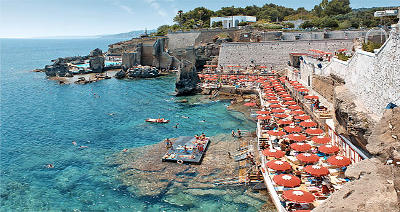
The various tourist facilities of Salento offer travelers of all budgets comfortable and welcoming accommodation, from campsites to hotels, from villages to splendid inland farms, and equally various culinary solutions.
There may be almost infinite ways to travel this enchanted territory , which at any moment is able to surprise the traveler.It is a bit as if the Salento Peninsula had a very special natural father and mother : the sea and the land, the countryside. The sea, that Mediterranean so rich in all the history we can imagine, caresses its coasts and creeps into every ravine from the Adriatic to the Ionian.
From the landing of Aeneas to the pirate raids over which the countless coastal towers watched , the sea has always been the main interpreter of the historical events of Salento, with a coast that alternates long sandy stretches with rocks, cliffs and sea caves .
The Salento hinterland is a treasure chest that holds incalculable beauties, art, traditions and culture . The countryside is particularly characterized by the numerous centuries-old olive trees, but the vegetation is rich in many other crops: figs, almond trees, prickly pears, vines, etc.Each of the many towns of Salento preserves its historic center with streets, squares, castles and palaces that testify to a millenary culture. The stone is not only the yellow and brittle of the noblest buildings, the Lecce stone , but also the very hard stone with which the typical dry stone walls are made that separate the small land of the peasants and their ancient buildings: pajare and furnieddhi.
Beaches of Salento
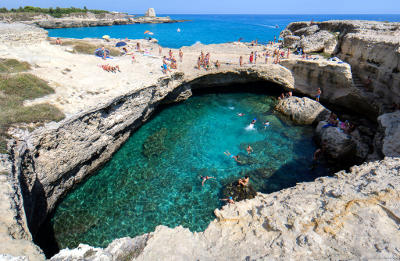
Salento, the extreme edge of Puglia , is bathed by the Ionian Sea and the Adriatic Sea, with about 200 kilometers of very varied coastline , from white beaches of fine sand to the suggestive cliffs full of caves on a crystal clear sea, framed by olive groves, fragrant scrub Mediterranean and pine forests.
Starting from Lecce, the capital of the Salento peninsula, you can appreciate the nearby marinas of Torre Chianca, Frigole and San Cataldo , on the Adriatic coast and easily reachable from the city in just over ten kilometers.Continuing along the Adriatic coast you will find San Foca and the bay of Torre dell'Orso , with almost a kilometer of beach dominated by the sixteenth-century coastal tower, where the stacks of the Due Sorelle are reflected in the sea of the Canale d'Otranto.
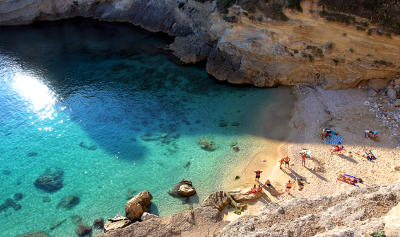
The rocky coast continues up to Porto Badisco , halfway between Otranto - where you can visit Punta Palascìa, the easternmost point of Italy - and Santa Cesarea Terme , a natural inlet like a fjord set between the rocky ridges and famous for its thermal baths and the cove of Porto Miggiano , where the towers of Sant'Emiliano and Minervino stand out.
Also not to be missed in this section is Baia dei Turchi , a few kilometers north of Otranto, which owes its name to the landing of the Ottoman army in 1480, during the siege of the city.
The bay is part of the protected Oasis of the Alimini Lakes , one freshwater and one salty, which form one of the most important ecosystems in Puglia, with a magical beach of wild dunes and white sand with sediments of volcanic origin.
The southern Adriatic coast continues with a coastline of breathtaking cliffs passing through Castro Marina - with the great Grotta Zinzulusa - Marina di Marittima and Marina di Andrano , Tricase Porto , Marina di Novaglie, il Ciolo - characterized by the bridge more than 20 meters high between the fjord overlooking the sea, a destination for passionate climbers - until reaching Santa Maria di Leuca , where around 30 sea caves open along the coast, of great environmental and naturalistic interest.
The Maldives of Salento
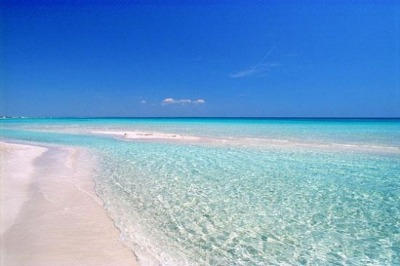
Going up from the Ionian coast you meet the inlet of the San Gregorio bay , from Torre Vado onwards the beautiful beaches of fine sand that characterize this stretch of Capo di Leuca overlooking the Ionian Sea.
The must is the beach of Pescoluse , “the Maldives of Salento” , a stretch of a few kilometers of almost tropical beach, with fine white sand, crystal clear waters and very shallow waters, where the dunes emerge between reeds and palm trees.The Ionian side continues with Torre Pali , also this marina of Salve, and Torre San Giovanni , the main marina of Ugento. Up to Gallipoli , with the beaches of Baia Verde and Lido Pizzo, there is an alternation of marinas and seaside resorts that vary between uncrowded sandy coves and rocky cliffs.
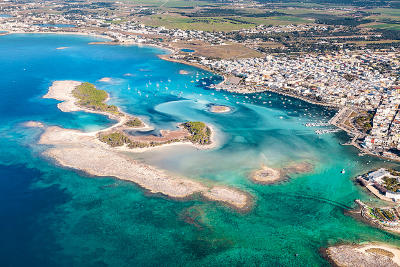
Santa Maria al Bagno and Santa Caterina are the marinas of Nardò dominated by the Torre dell'Alto, an Aragonese fortress that was part of the coastal defense system.
Beyond its promontory is Porto Selvaggio , a nature reserve of over a thousand hectares where nature is the absolute protagonist, continuing the ascent of the Ionian side of Salento to the localities of Sant'Isidoro , Porto Cesareo and Torre Lapillo .
In Punta Prosciutto there are still long Caribbean beaches of fine and white sand, high dunes and expanses of Mediterranean scrub in a protected marine area that reaches Torre Colimena , with the suggestive Salina dei Monaci where pink flamingos reign.






